When planning a trip to Japan, many travelers immediately think of spring cherry blossoms or fiery autumn leaves. However, there is another season that reveals a softer, quieter beauty, the rainy season, known locally as tsuyu. Lasting from early June to mid-July, this period may not sound appealing at first, but it is actually one of the most atmospheric times to experience Japan. With gentle showers, misty landscapes, and blooming hydrangeas painting temples and gardens in shades of blue and purple, the rainy season offers a unique charm that many visitors overlook.
What to Expect During Tsuyu in Japan
The rainy season in Japan typically begins in early June and lasts until mid-July, though the exact timing varies slightly depending on the region. During these weeks, the weather brings consistent rainfall and higher humidity, with cloudy skies replacing the bright sunshine of late spring.
Despite its reputation, tsuyu is not a time of constant downpours. Instead, you’ll often encounter light to moderate showers, with occasional heavier rain. The average temperature stays mild, creating a refreshing break before the hot and humid summer arrives.
For locals, the rainy season is more than just weather, it is part of Japan’s cultural rhythm. Rainfall nourishes the rice fields, hydrangeas blossom in full glory, and there is a quiet appreciation of nature’s cycles. Instead of seeing it as an inconvenience, many Japanese view this season as a time of renewal and calm.
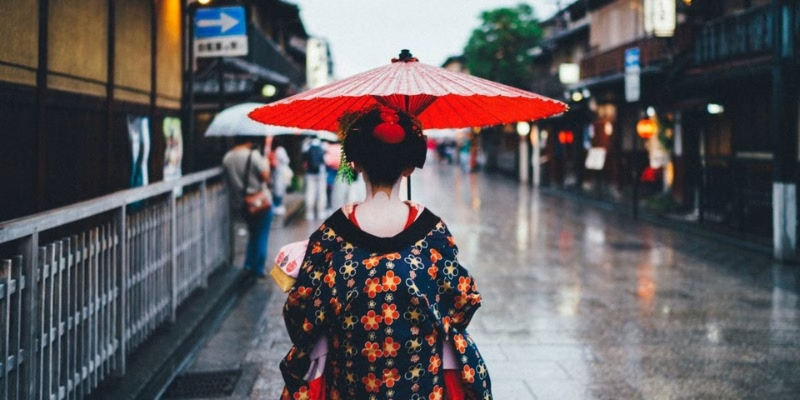
The Symbolic Flower of Japan’s Rainy Days
One of the most enchanting sights during tsuyu is the hydrangea (ajisai in Japanese). These flowers thrive in moisture, and their blossoms burst into vibrant colors just as the rains begin. Shades range from deep indigo to soft lavender, pale pink, and even snowy white. What makes them fascinating is that their colors can change depending on the soil’s pH level.
In Japanese culture, hydrangeas symbolize gratitude, heartfelt emotions, and sometimes fleeting love. They are often associated with reflective moods, perfectly matching the serene atmosphere of rainy days. The sight of pathways, temple grounds, and shrines lined with glistening petals after a fresh shower is a memory travelers cherish long after they leave.
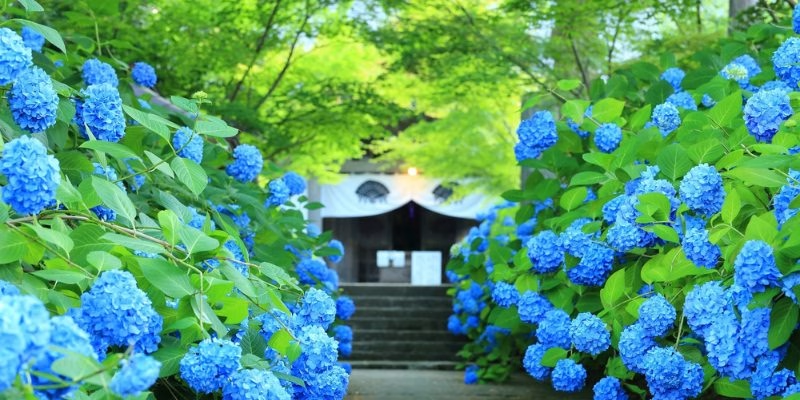
Seasonal Food and Cultural Experiences During the Rainy Season
The rainy season is not only about hydrangeas and misty scenery, but also about savoring flavors and traditions unique to early summer in Japan. This is the time when fresh plums are harvested and used to make umeshu (plum wine) or umeboshi (pickled plums), both of which are believed to boost health and energy during humid days.
Tea houses often serve seasonal wagashi (Japanese sweets) shaped like hydrangea petals or raindrops, pairing perfectly with a warm cup of matcha. Visiting a traditional café or local market allows travelers to enjoy these fleeting delicacies that reflect Japan’s sensitivity to the seasons.
Some towns and temples also organize hydrangea festivals, where visitors can stroll through flower paths, attend cultural performances, and buy local crafts. These events combine natural beauty with community traditions, offering travelers a deeper connection to Japan beyond sightseeing.
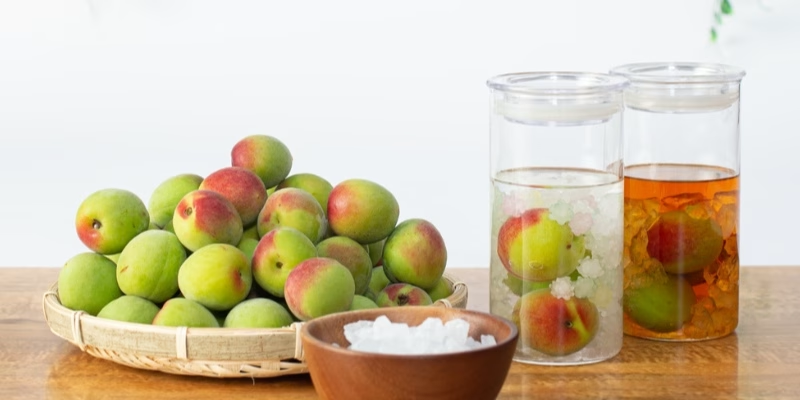
Where to See the Best Hydrangea in Japan
If you visit Japan during June or July, make sure to include some famous hydrangea viewing spots in your itinerary. These locations are celebrated for their breathtaking seasonal displays:
- Meigetsu-in Temple (Kamakura) – nicknamed the “Hydrangea Temple,” it is home to thousands of blossoms that line ancient pathways. Kamakura itself is an easy day trip from Tokyo, making it a popular destination.
- Mimuroto-ji Temple (Kyoto) – Known as the “Hydrangea Temple of Kyoto,” this hillside garden contains more than 10,000 plants. The blend of flowers with historic architecture makes it an unforgettable scene.
- Hakusan Shrine (Tokyo) – This hidden gem hosts the Hakusan Ajisai Festival, where visitors can enjoy both a spiritual atmosphere and colorful blooms in the heart of the city.
- Ajisai Park (Kanagawa) – A spacious park filled with hydrangeas, perfect for families and those who want to enjoy a more relaxed, natural setting.
Pro tip: visit during or just after a light rain shower. The raindrops add a magical sparkle to the petals, creating picture-perfect scenes.
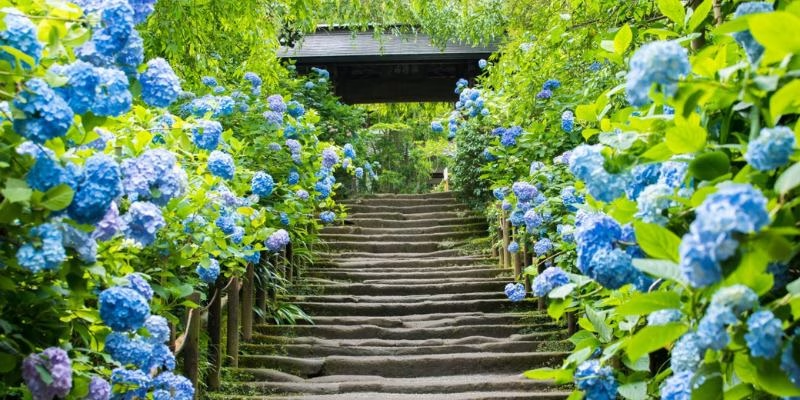
Tips for Traveling in Japan’s Rainy Season
Traveling during tsuyu can be surprisingly enjoyable if you prepare well. Here are some suggestions:
- Pack smart: Carry a foldable umbrella, a lightweight raincoat, and waterproof shoes. You’ll stay dry without having to worry about extra bulk in your bag.
- Plan for flexibility: Some outdoor activities may be affected by weather, so it’s wise to have indoor options like museums, tea houses, or shopping districts as backup.
- Enjoy seasonal experiences: Rainy days are perfect for slowing down. Savor matcha tea in a traditional café, try wagashi (Japanese sweets), or attend a hydrangea festival.
- Photography tip: Cloudy skies and gentle rain create soft, diffused light that enhances colors in photos, ideal for capturing hydrangeas in their best form.
With the right mindset, the rainy season transforms from a challenge into one of Japan’s most atmospheric travel periods.

Renting Short-Term Housing in Japan During the Rainy Season
When visiting Japan during tsuyu, many travelers find that short-term rentals are more practical than hotels. Rainy weather can mean more laundry, damp clothes, or the desire to cook at home instead of eating out every night, things that are much easier in a rental apartment.
Benefits of renting short-term housing include:
- Flexibility – Options range from weekly to monthly stays, allowing you to adjust according to your travel plans.
- Comfort – Apartments often provide washing machines, drying space, and larger living areas than standard hotel rooms.
- Cost efficiency – For longer stays, short-term rentals can be more budget-friendly than hotels, especially for families or groups.
- Authentic experience – Staying in a neighborhood apartment lets you experience Japanese daily life, from shopping at local markets to visiting nearby shrines.
For those who want to explore hydrangea spots across different regions, short-term rentals near train stations are particularly convenient. They provide easy access to both major cities and hidden gems.

Rainy Season Travel Checklist for Japan
Besides an umbrella and a raincoat, travelers should also consider bringing:
- Quick-dry clothing – lightweight and fast-drying fabrics that stay comfortable in humid weather.
- Waterproof bag covers – to protect cameras, phones, or laptops during outdoor walks.
- Portable dryer sheets or dehumidifier packs – useful for keeping luggage fresh and preventing mold, especially when staying in a short-term rental.
- Power bank – rain may lead you to spend more time in cafés or train stations, so having a backup battery is always convenient.
This section adds practical value for readers who are searching for what to pack for Japan’s rainy season.
Festivals and Events to Enjoy During Tsuyu
Even though it rains, summer festivals still brighten up this season:
- Hydrangea Festivals – held at temples, shrines, and parks like Hakusan Shrine in Tokyo or Mimuroto-ji in Kyoto.
- Plum Festivals (Ume Matsuri) – coinciding with the plum harvest, where visitors can try plum wine, plum jam, or buy seasonal souvenirs.
- Local cultural performances – some regions feature traditional music or dance within the festival grounds, creating a lively atmosphere even on rainy days.
This section expands the article into the cultural side of tsuyu, helping capture search traffic for terms like Japan rainy season festivals or events in Japan June July.
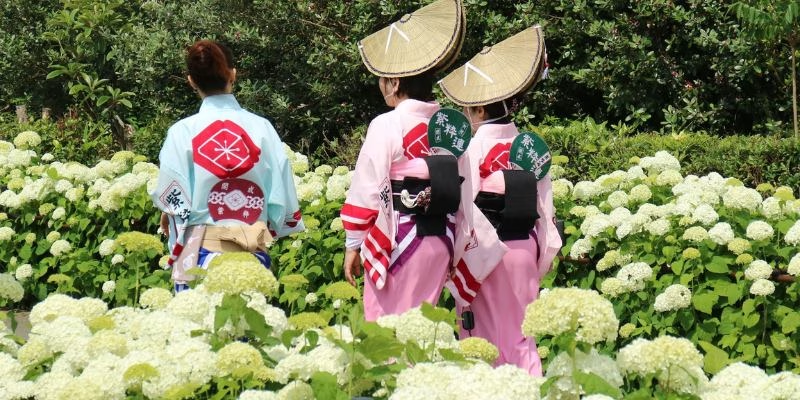
Smooth Relocation to Japan with Arealty
Securing housing in Japan can feel overwhelming for many newcomers. Complicated rental rules, guarantor requirements, and language gaps often add unnecessary stress. With the right professional support, however, moving becomes a far more seamless experience.
Why Arealty?
- Multilingual team: Fluent in English, Japanese, and Vietnamese.
- Local expertise: Deep understanding of Japan’s property market and expat needs.
- Complete guidance: From property search to contracts and move-in support.
- Clear & reliable process: Transparent communication and client-first service.
With Arealty by your side, finding a home in Japan is straightforward, leaving you free to settle into your new life with peace of mind.
Hotline: 050-6864-9697
Website: https://arealty.jp
Conclusion
The rainy season in Japan might not be the most obvious time to travel, but it offers a side of the country that is serene, colorful, and deeply memorable. Hydrangeas bloom in their full glory, historic temples glow under misty skies, and the slower pace invites travelers to experience Japan in a more reflective way.
By preparing properly, embracing seasonal traditions, and considering the comfort of a short-term rental, you can turn what might seem like a “rainy trip” into an unforgettable journey. The beauty of hydrangeas under the rain is proof that even on cloudy days, Japan has a special light of its own.

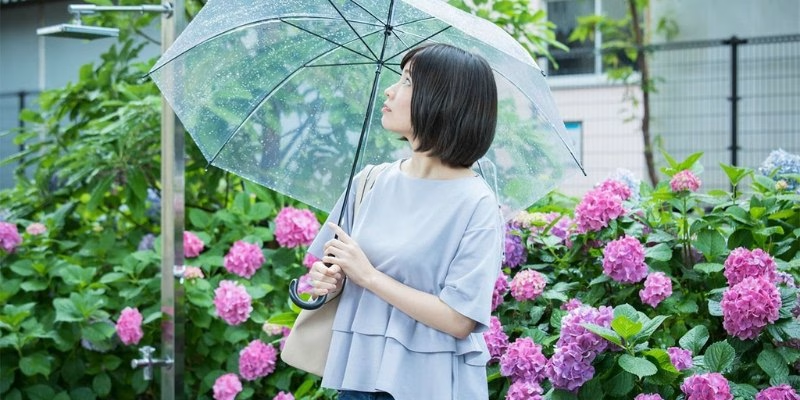

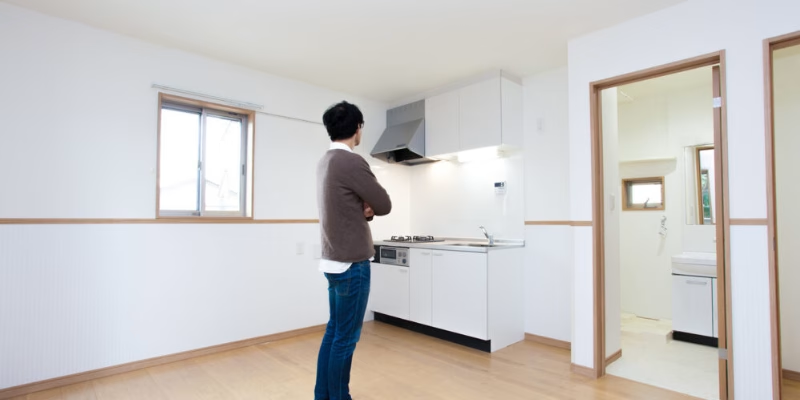


Leave a Reply